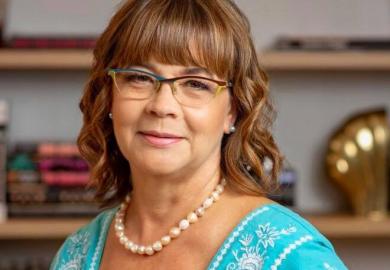The last mile: centering people in the brave new world of digital tech-enabled peace operations
Using digital technologies in strategic communications and outreach | Laura BaileyUnlocking the power of technology in support of peace arguably requires us to first grapple with uncomfortable questions, honestly challenge why we look to technology for answers, and only then consider how digital technologies can assist in strategic communication and outreach, as well as in running a mission and being accountable. Two decades at the World Bank, including as the Global Lead for Stability Peace and Security, extensive field observation and HQ collaboration between the UN and the World Bank have shaped my understanding of UN peace operations and led to the following reflections.
Three uncomfortable questions
The power of technology in supporting peace – including but also beyond peace operations – arguably requires us to first grapple with three uncomfortable questions and then turn our thinking upside-down:
- What are we ‘leveraging’ with technology: Efficiency of operations by obtaining and using the data that belongs to beneficiaries? Transparency and accountability by opening ourselves to observation and monitoring?
- Who are the primary beneficiaries of our adoption of technology: Our staff? The member-state funders and recipients of our less costly and more data-enriched reporting? The people at risk who we aim to serve?
- How clear is our understanding of the tradeoffs between privacy, convenience, and autonomy that our use of technology forces upon people-at-risk? In seeking to protect, safeguard, or help, do our choices risk disempowering people, taking away their agency?
If we can grapple honestly with these uncomfortable questions, then we will probably have assembled the raw material for a more inclusive and ‘people-as-drivers-of-peace’ frame for our use of technology. We can use that raw material to invert our approach, which has been dominated by a narrow focus on tools and the mechanics and cost of using them, flipping to first ask “Why?”
Are we considering this particular use of technology because it serves the core purpose of our peace operations mission? Or because it’s the latest thing available and sparks us with a sense of modernity, relevance, and edge?
The lure of technology
Why do we feel a pull towards technology as a supporter or accelerator in peace operations? Four main lines of argument come to mind focusing on understanding, reach, ability to react and efficiency.
- We want to understand in more detail, with more diversity and accuracy, the situation on the ground.
- We want to travel the last kilometer, to reach the last community, and touch the last person in need, not (just) to suppress violence and enforce order, but to genuinely empower them as agents of their own safety and security.
- We want to hear more quickly the evolving (or deteriorating) realities, from the voices of as many actors as possible.
- We want to reduce friction and inefficiencies in our logistics and program operations, to free up resources and strategic attention for the vulnerable humans in harm’s way.
Note that none of the answers to ‘why’ include ‘We want to be the cool kids with the cool tech toys.” Still, that pull is real, and we must acknowledge and use it as a vetting tool: Are we considering this particular use of technology because it serves the core purpose of our peace operations mission? Or because it’s the latest thing available and sparks us with a sense of modernity, relevance, and edge?
Finding the right approach
Every week we see the accelerating availability, and decreasing cost, of satellite and remote sensing data, web-scraping online publications, sentiment analysis of social media, geo-enabled physical metrics, and cellphone metadata; it is not surprising that the pull of shiny new digital tech tools is strong. Having unbundled the motivating force and the links to our core mission and desired impact above, we must ask “What? How?” before settling on a particular approach or technology.
- What inefficiency am I trying to eliminate? What gap do I want to fill, what duplication can I eliminate?
- What is holding my team back from faster, more accurate, more nimble responses to volatile situations?
- What social or geographic barriers are preventing us from traveling the last kilometer reaching the last community?
- What do our beneficiaries need that we are failing to provide?
- How can I choose technology that serves the explicit needs uncovered by these ‘what’ questions? What criteria should I employ?
- How can I establish vetting, access, and usage rules-of-the-game that will help me travel the last mile, reach the last community, without disempowering them or treating their personal data as a resource to be mined?
In all this, we should remember that the use of innovative tools in peacekeeping settings is not new, and as tools for prevention in growing. Before diving in to select and procure digital tech using a purely technocratic lens, we should explore what lessons can be learned from the human experiences elsewhere: in empowering citizens to report their own reality, as captured in a National Violence Monitoring System in Indonesia; in using technology to create networks citizens control themselves, such as the emergency FireChat-app; or in reinventing ‘old’ technology, such as ‘talking books’ that seek to overcome challenges of illiteracy in rural communities.
The challenge for the UN, and the broader peacebuilding community, is to support a proactive investment to bring about a coherent organizational shift.
Imagining the future
Imagine a peace operation, where all staff are equipped with smartphones or tablets that use software that is robust across varying degrees of connectivity to the internet, with data bandwidth that allows them to act as temporary local hotspots in communities whose own access is constrained. Imagine all mission staff who travel throughout the operational footprint, regardless of purpose (outreach to local stakeholders, maintenance of mission assets, security patrols) having an app on those devices that uses a preprogrammed interface like a ‘chatbot’ with preprogrammed conversation prompts that cover core information that allows the visiting mission staffer to monitor and verify a few key items that are critical to the mission mandate. They might also each be given one or two local interlocutors with whom they are asked to ‘check in’, with a few set questions mandated by the chatbot in addition to the organic conversation they’ll have. Data uploads and synchronizes automatically as soon as the staffer is back in range of transmission networks, giving close-to-real-time data that can be acted upon long before staffers return to HQ and write up their memos. Imagine that combination of flexibility and structure, the larger pool of observations generated, the ability to act in locally targeted ways to locally identified problems.
The challenge for the UN, and the broader peacebuilding community, is to support a proactive investment to bring about a coherent organizational shift. This means budgeting for technology upfront, hiring the right combination of technical experts and social development/community engagement specialists, working in tandem), and socializing across all mission departments the “why?” discussion described earlier. Investments in hardware and software will not deliver impact unless we build a common understanding of the benefits and challenges in a people-centered approach to technology. It also, critically, means selecting leadership who wholeheartedly endorse and will enforce explicit principles to guide the deployment and use of technology, and signal the appropriate boundaries and ethical guidelines that all mission staff are expected to follow. In this way, we can support peace and #BuildABridgeToBetter.
Download article
Images
- Author | Laura Bailey priv.
- Mobile | Unsplash, Rodion Kutsaev

